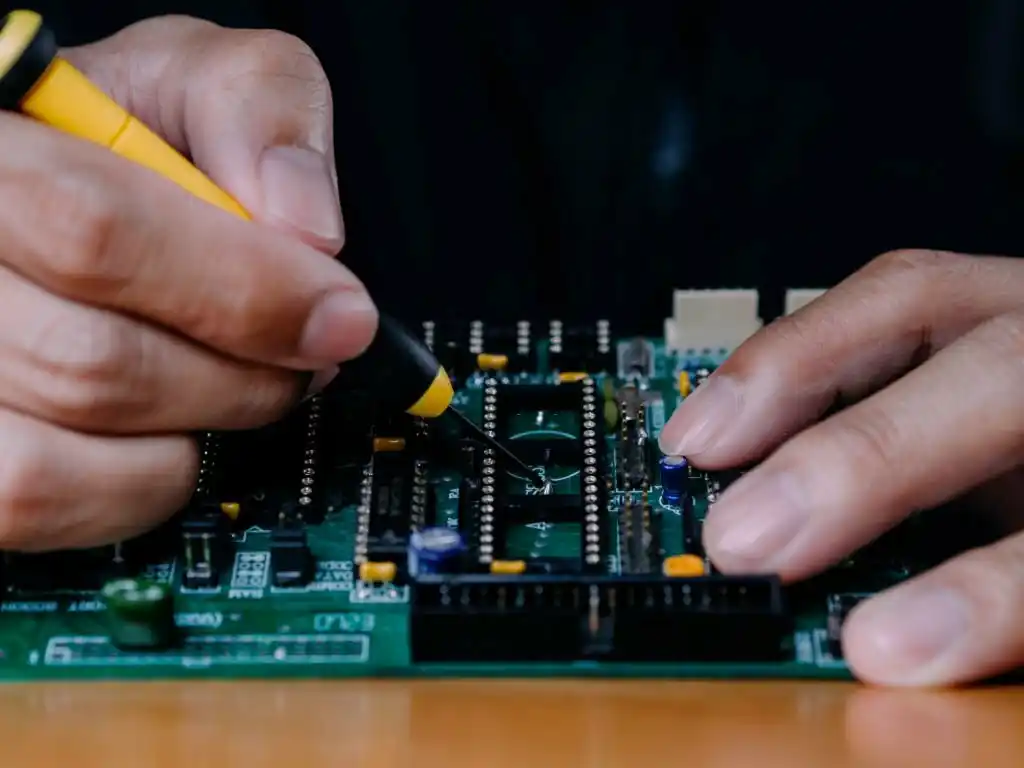Microcontrollers are compact integrated circuits that contain a processor core, memory, and various peripherals on a single chip. They’re designed to execute specific tasks within electronic systems. Here are some key aspects to consider:
Components of a Microcontroller:
- Processor/Core: This is the central unit that performs calculations and executes instructions.
- Memory: Includes ROM (Read-Only Memory) for storing firmware and program instructions, and RAM (Random Access Memory) for temporary data storage.
- Peripherals: These are hardware components integrated into the microcontroller, such as timers, communication ports (like UART, SPI, I2C), analog-to-digital converters (ADCs), and digital I/O pins.
- Clock: Provides the timing for the processor’s operations.
Types of Microcontrollers:
- 8-bit, 16-bit, 32-bit, and 64-bit: Refers to the size of the data bus and registers, impacting processing power and memory addressing capabilities.
- General-Purpose vs. Application-Specific: Some microcontrollers are designed for a wide range of applications, while others are specialized for specific tasks (e.g., motor control, automotive, industrial automation).
Applications:
Microcontrollers are found in various devices and systems:
- Automotive: Engine control units, airbag systems, infotainment systems.
- Industrial Automation: PLCs (Programmable Logic Controllers), robotics, sensors.
- IoT (Internet of Things): Smart home devices, wearable tech, connected sensors.
Programming:
Microcontrollers are programmed using specific languages (like C, C++, or assembly language) and development environments (such as Arduino IDE, MPLAB, or Keil). They require specific knowledge of hardware interfacing and low-level programming compared to traditional software development.
Advancements:
- Miniaturization: Constantly evolving to become smaller, more efficient, and more powerful.
- Integration of Features: Modern microcontrollers often include built-in peripherals to reduce external component count.
- Connectivity: Many now come equipped with wireless capabilities like Bluetooth, Wi-Fi, or cellular connectivity to enable IoT applications.
Choosing the Right Microcontroller:
Selecting the appropriate microcontroller involves considering factors such as processing power, memory requirements, required
